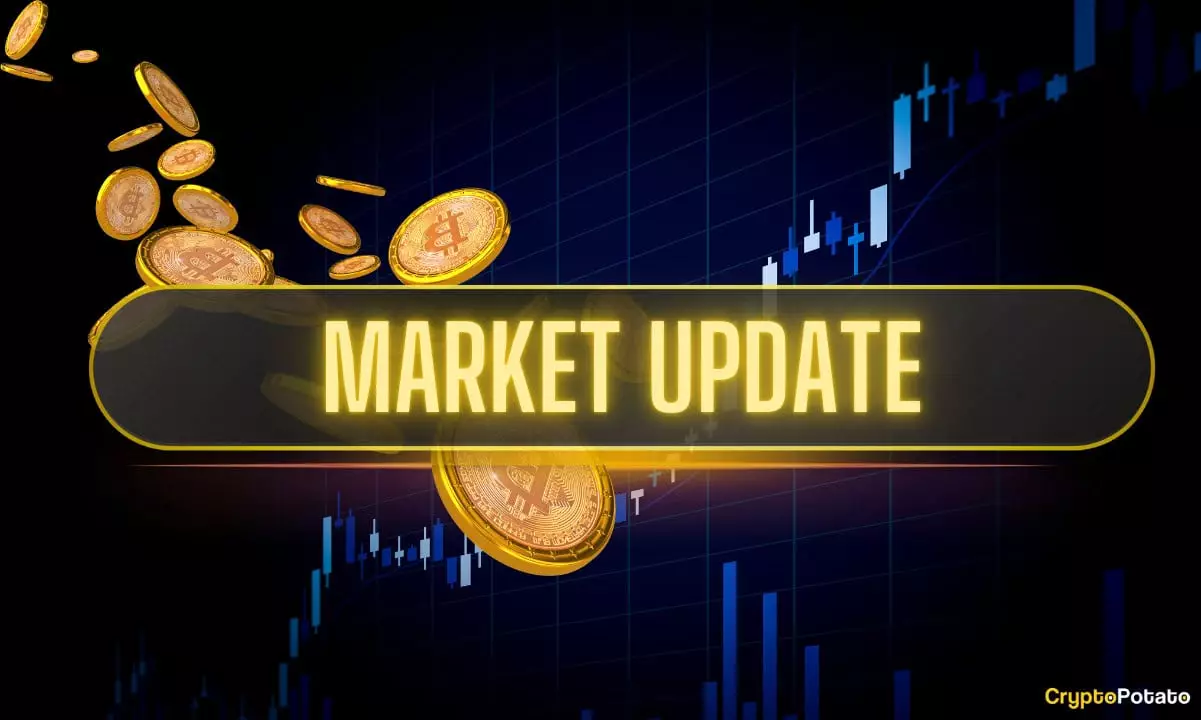This week’s extraordinary movement in the cryptocurrency market is not just another fleeting spike; it is a seismic shift that reveals the underlying resilience and latent strength of digital assets. For months, experts and skeptics alike have questioned the sustainability of Bitcoin’s (BTC) stagnation within a narrow trading range, especially after its dip during geopolitical turbulence. Yet, the recent breakout shattered those ceilings with a force that suggests a new prime movement, one that could fundamentally alter how we perceive wealth, power, and influence within the financial landscape.
Contrary to the conventional wisdom that markets react rationally to external threats or macroeconomic factors, what we witnessed was less about fear and more about strategic accumulation by a new wave of institutional players. The rally was astonishing—not just in its magnitude but in its timing, breaking through technical resistance levels that many considered formidable walls. Bitcoin’s climb from around $105,000 to nearly $119,000 in a matter of days underscores a critical point: this isn’t just a brief pump driven by hype but a calculated push driven by deep institutional conviction and a desire to assert dominance in a rapidly evolving system.
Who’s Driving the Frenzy? Institutions, Not Retail
It’s tempting to attribute this rally solely to retail enthusiasm, perhaps driven by FOMO or speculative mania. But the cold, hard data signals otherwise. Market sentiment analysis and on-chain metrics show a conspicuous absence of retail participation at this peak. Instead, the real movers—those with the capacity to influence market direction—are large whales and institutional investors. This shift signifies a consolidation of power, a clear indication that the true leverage in the crypto domain is now held by entities that understand the strategic importance of this digital frontier.
Moreover, narratives are swirling about the accumulation patterns of these giants. Dormant whales—entities that have remained inactive for months—have suddenly stirred, injecting significant liquidity into the market. This signals a calculated effort to position themselves for what many see as a multi-year bull cycle, rather than a short-term speculative event. Their actions indicate confidence in the resilience of cryptocurrencies and an intention to dominate the future financial order.
Geopolitical Chaos or Strategic Opportunity?
In a week marred by aggressive tariff hikes and international tensions, it might seem counterintuitive that markets would surge. Yet, this contradiction exposes a fundamental truth: traditional geopolitical turbulence is increasingly irrelevant in the face of digital assets’ rising influence. The recent tariffs by major economies, including the U.S. and its allies, seem instead to accelerate the shift towards decentralized finance, where control is fragmented and less susceptible to political whims.
This pivot could be seen as a strategic warning to policymakers: efforts to weaken or control the crypto ecosystem through tariffs or regulation are ultimately futile. The crypto markets are responding not to short-term policy shifts but to a long-term recognition that digital assets are a new frontier of power. They symbolize a form of financial sovereignty that threatens the old order, and the recent move higher in Bitcoin and altcoins demonstrates that this challenge is being met with an unprecedented show of strength.
The Broader Implications: A Readiness for Disruption
Beyond the immediate price action, this week’s rally signals a tectonic shift in market dynamics. The fact that major institutions like BNY Mellon are now backing stablecoins such as RLUSD reveals a widening acceptance of cryptocurrencies’ utility in traditional finance. Simultaneously, the impressive inflows into Ethereum ETFs, led by industry giants like BlackRock, mark a turning point where mainstream institutional capital is no longer on the sidelines but actively shaping the narrative.
The impressive performance of altcoins—ranging from ADA’s 30% gains to Ripple’s 20% spike—indicates a maturation process within the crypto space. They are no longer fringe assets but components of a complex, interconnected ecosystem that can challenge existing financial institutions. Yet, it’s critical to recognize that this rapid expansion comes with inherent risks. Market speculation remains high, and the impact of external shocks, whether from geopolitical events or regulatory crackdowns, could alter this trajectory.
This week’s market movement is not merely about rapid gains or breaking records; it’s about a fundamental reassessment of who holds power in the financial universe. The traditional players—retail investors—are now relegated to a secondary role, while institutions with strategic patience and deep pockets are steering the ship. The rally signals a decisive move toward a future where digital assets become central to global wealth management, and those who understand this shift will be the ones wielding influence in the years to come. Whether this trend continues or falters will ultimately depend on how governments and regulators respond, but the current momentum undeniably suggests that the digital revolution is no longer on the horizon—it is here and evolving rapidly.

